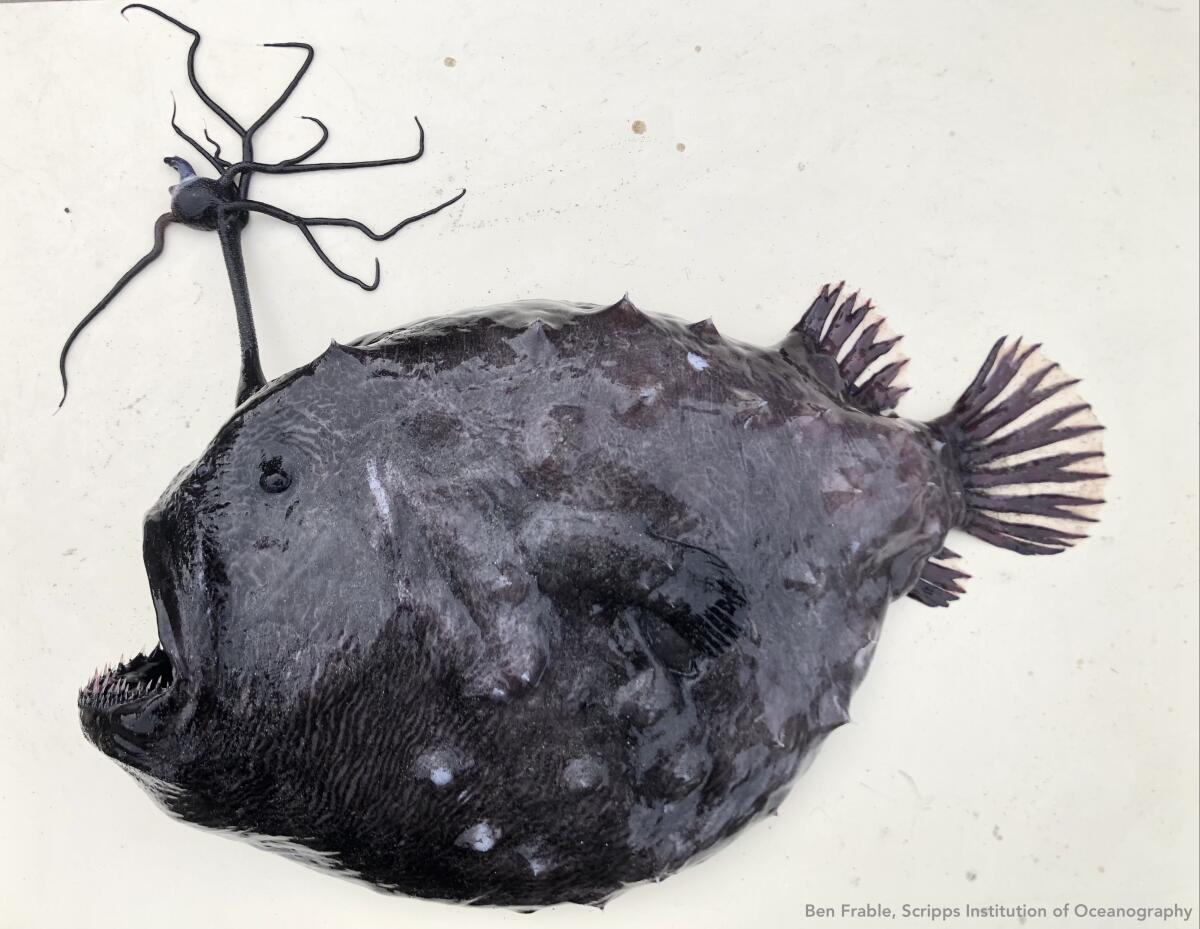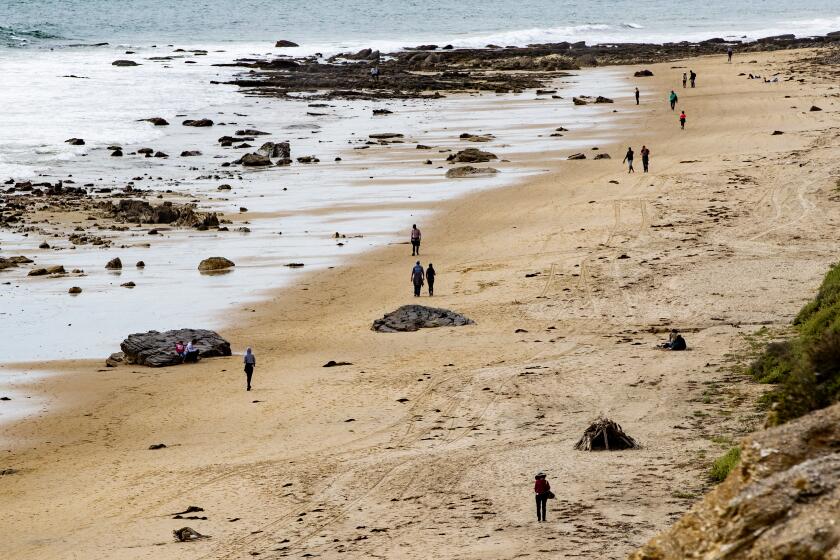Ultra-rare, bizarre fish that washed ashore near San Diego is California’s third this year

Confronted with a jet-black globular fish with razor-sharp teeth, prickly skin and a strange stalk protruding from its head, lifeguards at Swami’s Beach in Encinitas immediately knew they had something extraordinary on their hands.
A surfer found the ghoulish-looking, nearly 13-inch dead fish washed ashore Friday and alerted lifeguards, who in turn notified scientists, said David Huff, a marine safety sergeant with the city of Encinitas.
What had emerged from the depths was a Pacific footballfish, an exceedingly rare species of anglerfish that inhabits deep waters beyond the sun’s reach, said Ben Frable, collection manager of marine vertebrates at UC San Diego’s Scripps Institution of Oceanography, where the fish was sent.
Frable is preserving the 5-pound fish for the institution’s archive, “so researchers all over the world can utilize it for the years to come,” he said.
Only 31 collected specimens are known to exist in the world, and the fish has never been observed in the wild, Frable said. But in only the last year, three of the creatures have washed up on California beaches, doubling the number of sightings on record in the state. One was photographed last month near Black’s Beach in La Jolla but disappeared — potentially carried back to sea — before scientists were notified.
“It is very strange, and it’s the talk of the town among us California ichthyologists,” or zoologists who study fish, said Bill Ludt, assistant curator of ichthyology at the Los Angeles County Natural History Museum. The museum has four of the species in its collection, including one found by a beachgoer in Newport Beach in May.
Every time one washes ashore, Ludt said, he’s inundated with calls from friends and colleagues. They have discussed the curious occurrence, “but it’s hard to jump to any conclusions about why this is happening,” he said.
With less than three dozen dead specimens available to study, very little is known about the fish that lives in depths of roughly 1,000 to 3,000 feet. Scientists don’t know exactly what it eats, how it reproduces — or what might be driving the cluster of sightings.
“That’s the million-dollar question right now,” Ludt said.
The fish, which typically lives thousands of feet underwater, was found in pristine condition at Crystal Cove State Beach.
The pair of recently collected specimens were remarkably well preserved and don’t appear to bear marks of trauma from an attack or poisoning from something like an oil spill. Ludt surmised that if there were a massive catastrophe or die-off, more would be found.
One of about 160 to 170 species of anglerfish, the Pacific footballfish is readily identifiable by its especially elaborate bioluminescent lure protruding from its head — a striking physical adaptation used to attract prey in the pitch-black depths, Ludt said.
“It has all these accessory appendages coming off of it,” he said. “Each one of those accessory appendages has these bright silver tips that light up as well.”
It’s also one of the biggest species of anglerfish, with large females measuring about 12 to 15 inches. (Anglerfish exhibit what’s known as extreme sexual dimorphism: The males are much smaller than their female counterparts.)
“They’re so much stockier” than other anglerfish, which come in many shapes and sizes, Frable said. “They’re pretty much these spheres …covered in little spines,” which help ward off attacks from would-be predators.
They also have sharp teeth that angle inward in their mouth — ensuring that what goes in doesn’t come out.
Some find the fish’s appearance off-putting.
Jay Beiler, who recently chanced upon one on Black’s Beach, told news outlets, “It’s the stuff of nightmares.”
Ludt has a different take.
“I think it’s a beautiful fish,” he said.
More to Read
Sign up for Essential California
The most important California stories and recommendations in your inbox every morning.
You may occasionally receive promotional content from the Los Angeles Times.












